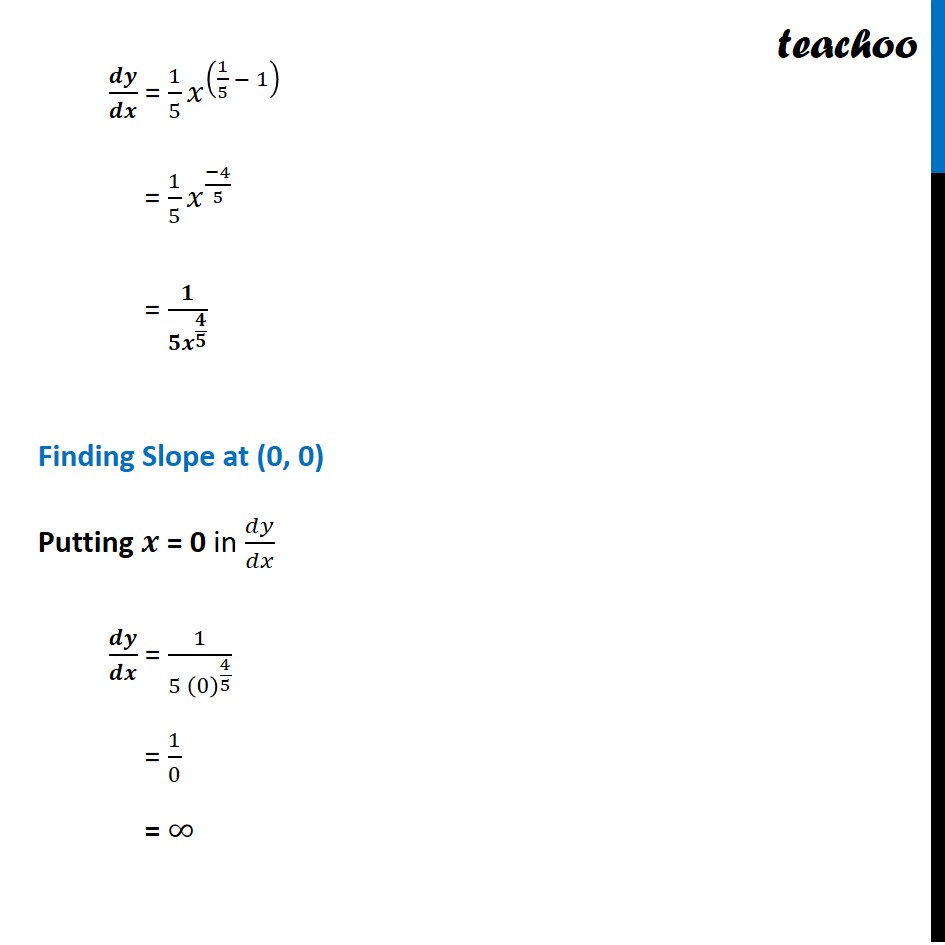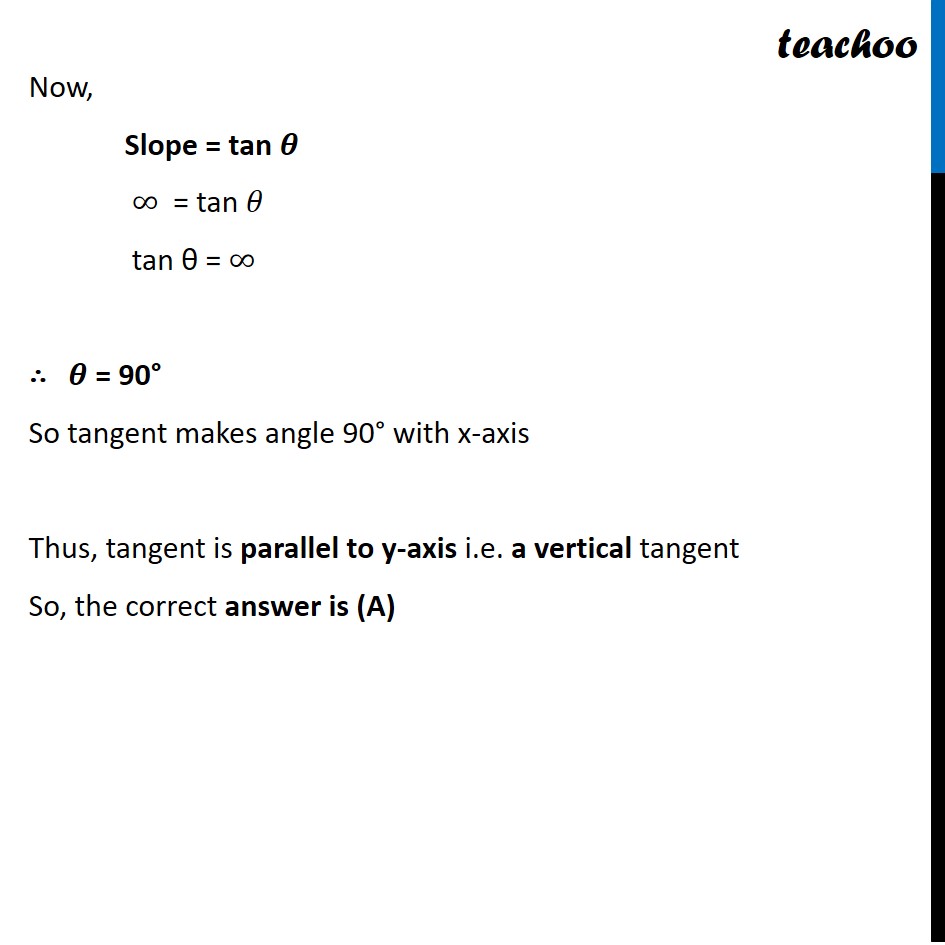The curve y = x^(1/5) has at (0, 0)
(A) a vertical tangent (parallel to y-axis)
(B) a horizontal tangent (parallel to x-axis)
(C) an oblique tangent
(D) no tangent
![The curve y = x^(1/5) has at (0, 0) - Class 12 AOD [MCQ] - Teachoo - NCERT Exemplar - MCQs](https://cdn.teachoo.com/52529fc5-14c6-4650-b3fa-dde0ab4b05ff/slide33.jpg)


NCERT Exemplar - MCQs
Last updated at Dec. 16, 2024 by Teachoo
![The curve y = x^(1/5) has at (0, 0) - Class 12 AOD [MCQ] - Teachoo - NCERT Exemplar - MCQs](https://cdn.teachoo.com/52529fc5-14c6-4650-b3fa-dde0ab4b05ff/slide33.jpg)


Transcript
Question 6 The curve y = 𝑥^(1/5) has at (0, 0) (A) a vertical tangent (parallel to y-axis) (B) a horizontal tangent (parallel to x-axis) (C) an oblique tangent (D) no tangent Since options are about finding tangent So, finding slope of tangent i.e. 𝒅𝒚/𝒅𝒙 at (0, 0) Finding 𝒅𝒚/𝒅𝒙 𝑦 = 𝑥^(1/5) 𝒅𝒚/𝒅𝒙 = 1/5 𝑥^((1/5 − 1) ) = 1/5 𝑥^((−4)/5) = 𝟏/(𝟓𝒙^(𝟒/𝟓) ) Finding Slope at (0, 0) Putting 𝒙 = 0 in 𝑑𝑦/𝑑𝑥 𝒅𝒚/𝒅𝒙 = 1/(5 (0)^(4/5) ) = 1/0 = ∞ Now, Slope = tan 𝜽 ∞ = tan 𝜃 tan θ = ∞ ∴ 𝜽 = 90° So tangent makes angle 90° with x-axis Thus, tangent is parallel to y-axis i.e. a vertical tangent So, the correct answer is (A)